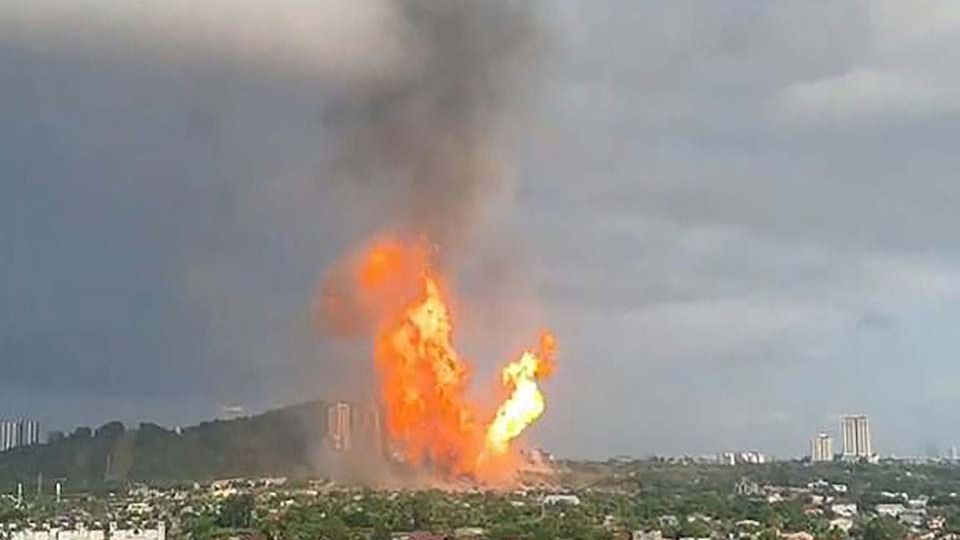April 3, 2025
PETALING JAYA – Investigations into the Putra Heights inferno on Tuesday should look at why safety mechanisms were not triggered before the explosion, says an expert.
Malaysian Society for Occupational Safety and Health president Ahmad Fakhrul Anuar Ismail also said it is also necessary to review and potentially tighten standard operating procedures (SOP) governing the 2,500 km of gas pipelines across the country to avert future tragedies.
Over 200 people were injured, and 235 premises and 399 vehicles damaged in the Tuesday morning incident.
Ahmad Fakhrul said that gas leaks are typically contained swiftly through automatic safety alarms, preventing such disasters.
“Why did it escalate to an explosion this time?” he questioned.
“Authorities must reassess the SOP to determine why vibrations were not detected if there was indeed excavation works, as reported near the pipeline, failed to trigger alarms.
“There should have been no work above the ground where pipelines are laid, as vibrations should have activated safety alarms.”
Ahmad Fakhrul was commenting on reports that some 20 agencies will begin investigations and safety inspections at the location of the gas pipeline fire in Jalan Putra Harmoni, Putra Heights.
The agencies include the Royal Malaysia Police, the Fire and Rescue Department, Tenaga Nasional Bhd and the Public Works Department as well as local government authorities and the district office.
“When investigating the incident, there are many elements to consider, including environmental and human factors that may have contributed to the inferno,” Ahmad Fakhrul said.
He said the 20 agencies involved in the probe would each look at different areas of the investigation as each has their own expertise.
“For example, the police can look at the possibility of trespassing and encroachment of the area where the gas pipelines are laid, while the fire department looks at the containment of fire when leaks happen.
“No matter if you have SOPs, there is always the opportunity to further tighten them,” he said.
He also cautioned that any work around areas where gas pipelines were laid had to be “super careful” as the risk of accidents happening is extremely high.
He pointed out that there are yellow signs to warn the public of where the natural gas pipelines are buried – the high-pressure pipelines managed by Petronas and low-pressure ones handled by Gas Malaysia.
“These pipelines are not laid out randomly but done under the many Parliamentary Acts such as the Petroleum Development Act 1974, Petroleum (Safety Measures) Act 1984 and Occupational Safety and Health Act 1994,” said Ahmad Fakhrul.
Former director-general of the Malaysian Fire and Rescue Department Datuk Seri Mohammad Hamdan Wahid said the 500m-long gas pipeline fire may have been the result of a “Boiling Liquid Expanding Vapour Explosion”.
He explained that when flammable gas leaks, gas vapour floats in the air before igniting and triggering a massive explosion.
“The container may have been damaged or ruptured, there might have been a leak, or it could have been caused by an open valve, among other factors.”
He explained that there are numerous regulations for the storage and transportation of flammable liquids.
“All gas pipeline installations in the country must comply with international safety standards and local regulations, such as the Malaysian Standard for Storage, Handling, and Transportation of Liquefied Petroleum Gas (MS830) and the Malaysian Standard for Storage and Handling of Flammable Liquids (MS761).”
Oil and gas companies must also comply with international standards, including The Compressed Gases and Cryogenic Fluids Code ( PA 55), which states the safety distances to reduce the risk of explosions and fires when leaks occur.
“Such a fire can generate radiant heat that damages nearby properties and leads to an escalation of fire.”
Meanwhile, the Institution of Engineers, Malaysia (IEM) said that it is ready to assist in the probe and provide guidance to government agencies and local authorities.
“One major concern is the proximity of the combustible facility to nearby residential areas.
“Additionally, the adequacy of existing safety measures must be thoroughly reviewed and, if necessary, upgraded,” said IEM.

